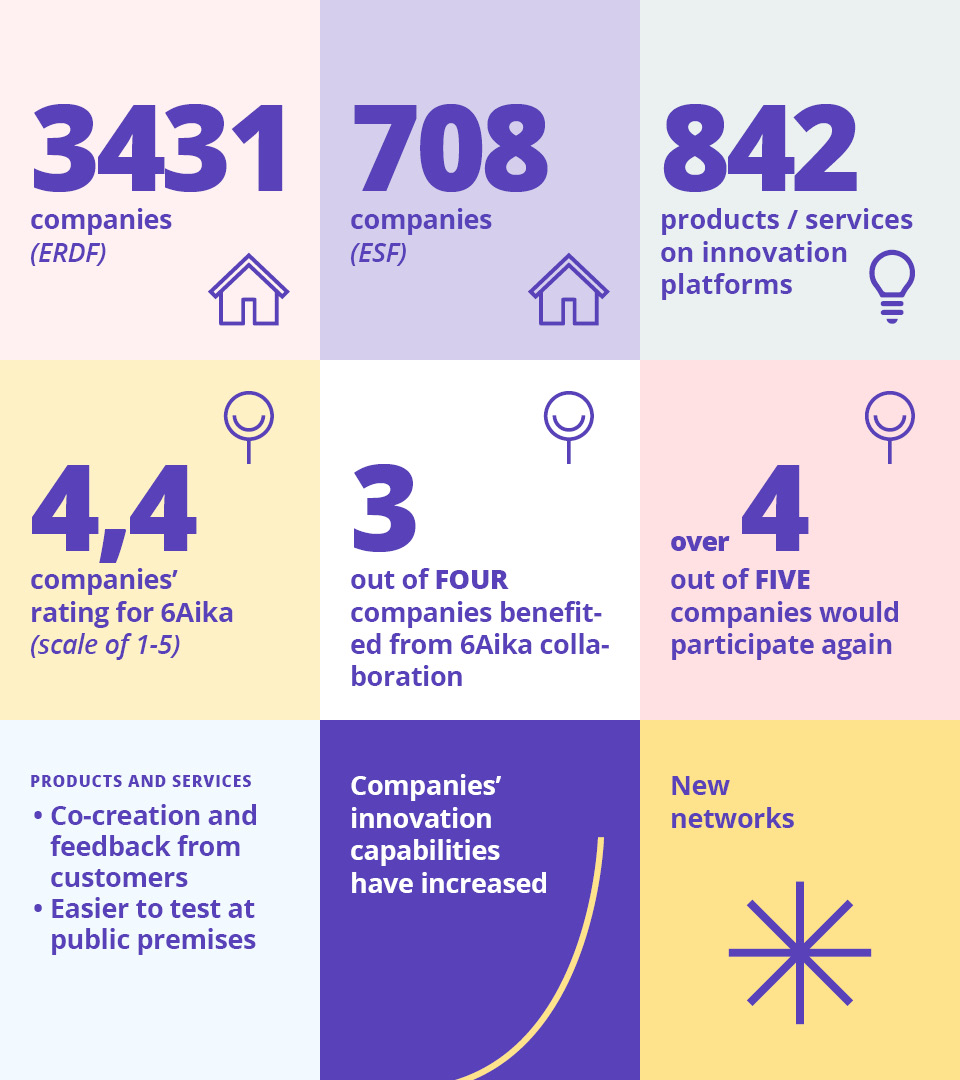6Aika, the Six City Strategy was a joint urban development programme of the six biggest cities in Finland: Helsinki, Espoo, Vantaa, Tampere, Turku and Oulu.
The goals of 6Aika, the Six City Strategy, included boosting Finland’s competitiveness and the productivity of its public sector, developing new service innovations, and promoting business and employment. The Six Cities served as development and testing environments for products and services. The strategy was implemented through projects, in which the city organisations developed services together with businesses, R&D organisations, and residents.
The Six City Strategy was the first joint urban development strategy in Europe involving multiple, geographically separate cities. Furthermore, in terms of population, the strategy was one of the most expansive urban development strategies in the EU.
Over 60 6Aika projects with different themes
More than 60 projects were launched as part of the strategy, the majority of which were European Regional Development Fund projects and the rest European Social Fund projects. The themes of the pilot projects ranged from smart mobility, learning, health and wellbeing to circular economy and energy efficiency. The main target groups included businesses and R&D organisations, while the employment-related projects were mainly targeted at young people and the academic unemployed, for example.
All the pilot projects had participants from at least two of the Six Cities. The projects were typically implemented by the city organisations, economic development agencies of the cities, universities and vocational institutions.
The spearhead projects shared by the Six Cities – Open Innovation Platforms, Open Data and Interfaces and Open Participation and Customership – served as the foundation for smaller pilot projects. These spearhead projects helped advance the important components of the Finnish smart city model: customer-focused co-creation, open data, utilisation of data and service development in authentic urban environments.
The total budget of the Six City Strategy was approximately €95 million. The ERDF funding was overseen by Helsinki-Uusimaa Regional Council and the ESF funding by the Häme Centre for Economic Development, Transport and the Environment. Funding was allocated through 13 open calls for project proposals.
Cities and companies developing new services together
One of the most important results of the Six City Strategy was a new type of cooperation between cities and companies. Collaboration also increased in areas of development where it hardly existed before. In the image below some of the main results of the collaboration with companies.

The Six City Strategy’s employment projects increased the cities’ competitiveness by improving the working age population’s skills and prerequisites for finding employment. The projects provided an agile response to the needs of the labour market that arose during various stages of the strategy. For example, they came up with solutions to the lack of skilled workforce in growth sectors and sectors undergoing economic restructuring. In the 6Aika employment projects there were altogether 708 companies and 5685 jobseekers involved.
The Six City Strategy Office and ten projects at Forum Virium
Forum Virium Helsinki was a partner in the following Six City Strategy projects:
- Open innovation platforms spearhead project
- Open data and interfaces spearhead project
- SOHJOA: Physical and Virtual Innovation Platform of Autonomous Last Mile Urban Transportation
- Last mile
- New Solutions in City Logistics
- CircVol – Utilisation of side streams and masses of soil in cities
- Developing Cleantech Markets and MyData for Housing Associations
- CoHeWe – Co-Created Health and Wellbeing
- Smart Learning Environments of the Future
- Carbon neutral tourism through smart solutions
Additionally, the Six City Strategy Office which was in charge of the coordination and strategy-level communications of the programme was at Forum Virium.
Materials
- Six City Strategy’s results publication Era of Cities (pdf)
- Examples of projects’ results on the Six City Strategy’s website
- Experiences with 6Aika – How we implemented a joint programme for sustainable urban development (pdf)
See more Six City Strategy results on 6aika.fi/en/frontpage/

